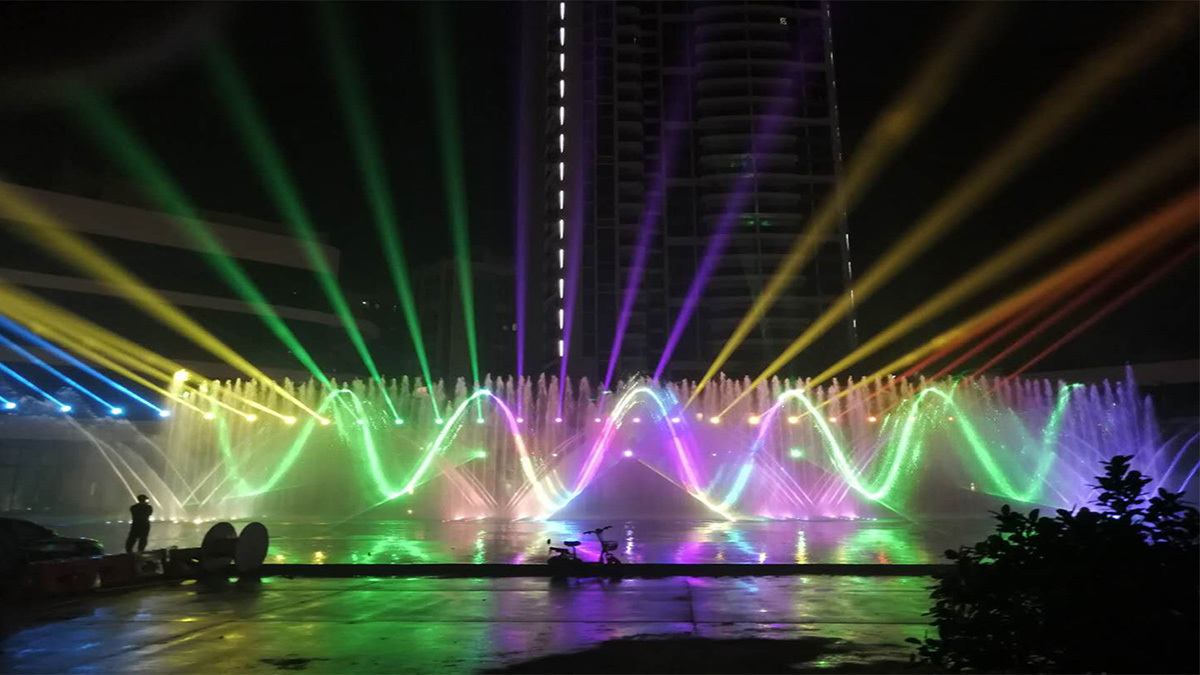Interactive Waterscape in music fountain
Release time:
2023-12-30 16:02:34
Shuttling through various urban spaces every day, a beautiful fountain can win you a few seconds to stop; Or occasionally, you and your friends sit by the water to rest, chat and daze. Most of the Waterscape in the city, like a "wallflower lady", decorates the beauty of the world, but it is difficult for you to contact it.
Sometimes, some water features seem to be rejecting you, and you will be blocked by railings from contacting them, or you will be afraid of its depth, or you will be afraid of being hurt by the jet height. Water, the soft element of the heart of the earth, has a fragile and alienated relationship with people in modern cities.
In Louis balagan's works and thoughts, balagan mentioned that he would introduce it into a "literary" context when designing architecture. He added a story to the design by "imagining" the whole design, and attached great importance to the use of language to describe the whole scheme.
We very much agree with this methodology. The designer first imagines the scene and participants, and has a "script" in mind. A play usually consists of the protagonist, scene, action, plot and medium.
01 protagonist
First, based on the known site data, the research on the site users is carried out, such as the age composition of the crowd, the temporal and spatial changes of the site flow, etc., so as to establish the collective impression of the protagonists (waterscape participants). On this basis, combined with the designer's experience and knowledge, the typical protagonist image is extracted.
However, our protagonist is not only a person who has "known the past" (known age, occupation or education, etc.), but also a person who has "possible future", that is, his/her expectations for the future of the site, future living conditions or goals, etc.
In this way, the protagonists with "future" can enable us to break through the static dimension and dynamically understand the individuals living here.
02 scenario
Through the investigation of the site and the requirements of the design task, determine the scene characteristics of the story. The setting of the scenario of the script is based on the historical context of the site, people's lifestyle and the functional characteristics of the site. It is not necessarily a realistic scene, but it can also be semi fictional, a metaphor of life, a continuation of culture, and the expansion of a theme. The establishment of the scene enables the story to take root in the local.
03 behavior
Behavior consists of a series of conscious actions, which are based on a series of unconscious operations. Operation needs operation conditions, action needs goals, and behavior is driven by motivation, which leads to our imagination of the protagonists' behavior. Based on the protagonists and scenes already defined in the early stage, we began to imagine specific behaviors:
From unconscious operation, such as sensory attraction, inadvertent trigger, surprise, etc; To the action with a goal, such as walking over, stopping, trying cause and effect back and forth, etc; When it comes to motivated behavior, you have understood something, such as deliberately pressing a button to spray water, splashing others (damaging), etc.
The behavior of a round includes two parts: the "behavior" to be done and the corresponding "feedback". That is, we not only imagine the behavior of the protagonist, but also the possibility that the waterscape will respond according to the action.
03 media
The media to realize the interaction between human and waterscape can be divided into input and output. The input and output terminals correspond to the "behavior" and "feedback" of the behavior part discussed above.
The input terminal is how to contact the waterscape, which can be divided into passive contact and active contact. The trigger device of passive contact is hidden in the corner of the space, which can bring an unexpected surprise. For example, when sitting in a public seat, the ripples in the opposite pool will faint.
Active contact is mainly based on obvious device indication, emphasizing people's active participation. Such as fingertip water whistle, water gun, cycling water spray, button water spray, etc.
Related News


 CN
CN EN
EN






